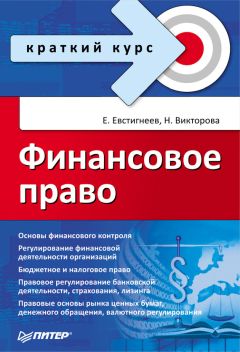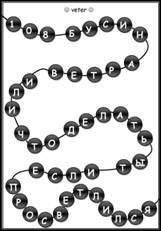Барбара Оакли - Думай как математик: Как решать любые задачи быстрее и эффективнее
Immordino-Yang, M. H., et al. “Rest is not idleness: Implications of the brain’s default mode for human development and education.” Perspectives on Psychological Science 7, 4 (2012): 352–364.
James, W. Principles of Psychology. New York: Holt, 1890.
Ji, D., and M. A. Wilson. “Coordinated memory replay in the visual cortex and hippocampus during sleep.” Nature Neuroscience 10, 1 (2006): 100–107.
Jin, X. “Basal ganglia subcircuits distinctively encode the parsing and concatenation of action sequences.” Nature Neuroscience 17 (2014): 423–430.
Johansson, F. The Click Moment. New York: Penguin, 2012.
Kalbfleisch, M. L. “Functional neural anatomy of talent.” The Anatomical Record Part B: The New Anatomist 277, 1 (2004): 21–36.
Kamkwamba, W., and B. Mealer. The Boy Who Harnessed the Wind. New York: Morrow, 2009.
Kapur, M., and K. Bielczyc. “Designing for productive failure.” Journal of the Learning Sciences 21, 1 (2012): 45–83.
Karpicke, J. D. “Retrieval-based learning: Active retrieval promotes meaningful learning.” Current Directions in Psychological Science 21, 3 (2012): 157–163.
Karpicke, J. D., and J. R. Blunt. “Response to comment on ‘Retrieval practice produces more learning than elaborative studying with concept mapping.’” Science 334, 6055 (2011a): 453–453.
Karpicke, J. D., and J. R. Blunt. “Retrieval practice produces more learning than elaborative studying with concept mapping.” Science 331, 6018 (2011b): 772–775.
Karpicke, J. D., et al. “Metacognitive strategies in student learning: Do students practice retrieval when they study on their own?” Memory 17, 4 (2009): 471–479.
Karpicke, J. D., and P. J. Grimaldi. “Retrieval-based learning: A perspective for enhancing meaningful learning.” Educational Psychology Review 24, 3 (2012): 401–418.
Karpicke, J. D., and H. L. Roediger. “The critical importance of retrieval for learning.” Science 319, 5865 (2008): 966–968.
Kaufman, A. B., et al. “The neurobiological foundation of creative cognition.” Cambridge Handbook of Creativity (2010): 216–232.
Kell, H. J., et al. “Creativity and technical innovation: Spatial ability’s unique role.” Psychological Science 24, 9 (2013): 1831–1836.
Keller, E. F. A Feeling for the Organism, 10th Aniversary Edition: The Life and Work of Barbara McClintock. New York: Times Books, 1984.
Keresztes, A., et al. “Testing promotes long-term learning via stabilizing activation patterns in a large network of brain areas.” Cerebral Cortex (advance access, published June 24, 2013).
Kinsbourne, M., and M. Hiscock. “Asymmetries of dual-task performance.” In Cerebral Hemisphere Asymmetry, edited by J. B. Hellige, 255–334. New York: Praeger, 1983.
Klein, G. Sources of Power. Cambridge, MA: MIT Press, 1999.
Klein, H., and G. Klein. “Perceptual/cognitive analysis of proficient cardio-pulmonary resuscitation (CPR) performance.” Midwestern Psychological Association Conference, Detroit, MI, 1981.
Klingberg, T. The Overflowing Brain. New York: Oxford University Press, 2008.
Kornell, N., et al. “Unsuccessful retrieval attempts enhance subsequent learning.” Journal of Experimental Psychology: Learning, Memory, and Cognition 35, 4 (2009): 989.
Kounios, J., and M. Beeman. “The Aha! moment: The cognitive neuroscience of insight.” Current Directions in Psychological Science 18, 4 (2009): 210–216.
Kruger, J., and D. Dunning. “Unskilled and unaware of it: How difficulties in one’s own incompetence lead to inflated self-assessments.” Journal of Personality and Social Psychology 77, 6 (1999): 1121–1134.
Leonard, G. Mastery. New York: Plume, 1991.
Leutner, D., et al. “Cognitive load and science text comprehension: Effects of drawing and mentally imaging text content.” Computers in Human Behavior 25 (2009): 284–289.
Levin, J. R., et al. “Mnemonic vocabulary instruction: Additional effectiveness evidence.” Contemporary Educational Psychology 17, 2 (1992): 156–174.
Longcamp, M., et al. “Learning through hand- or typewriting influences visual recognition of new graphic shapes: Behavioral and functional imaging evidence.” Journal of Cognitive Neuroscience 20, 5 (2008): 802–815.
Lutz, A., et al. “Attention regulation and monitoring in meditation.” Trends in Cognitive Sciences 12, 4 (2008): 163.
Lützen, J. Mechanistic Images in Geometric Form. New York: Oxford University Press, 2005.
Lyons, I. M., and S. L. Beilock. “When math hurts: Math anxiety predicts pain network activation in anticipation of doing math.” PLOS ONE 7, 10 (2012): e48 076.
Maguire, E. A., et al. “Routes to remembering: The brains behind superior memory.” Nature Neuroscience 6, 1 (2003): 90–95.
Mangan, B. B. “Taking phenomenology seriously: The ‘fringe’ and its implications for cognitive research.” Consciousness and Cognition 2, 2 (1993): 89–108.
Mastascusa, E. J., et al. Effective Instruction for STEM Disciplines. San Francisco: Jossey-Bass, 2011.
McClain, D. L. “Harnessing the brain’s right hemisphere to capture many kings.” New York Times, January 24 (2011). http://www.nytimes.com/2011/01/25/science/25chess.html?_r=0
McCord, J. “A thirty-year follow-up of treatment effects.” American Psychologist 33, 3 (1978): 284.
McDaniel, M. A., and A. A. Callender. “Cognition, memory, and education.” In Cognitive Psychology of Memory, Vol. 2 of Learning and Memory, edited by H. L. Roediger, 819–843. Oxford, UK: Elsevier, 2008.
McGilchrist, I. The Master and His Emissary. New Haven, CT: Yale University Press, 2010.
Mihov, K. M., et al. “Hemispheric specialization and creative thinking: A meta-analytic review of lateralization of creativity.” Brain and Cognition 72, 3 (2010): 442–448.
Mitra, S., et al. “Acquisition of computing literacy on shared public computers: Children and the ‘hole in the wall.’” Australasian Journal of Educational Technology 21, 3 (2005): 407.
Morris, P. E., et al. “Strategies for learning proper names: Expanding retrieval practice, meaning and imagery.” Applied Cognitive Psychology 19, 6 (2005): 779–798.
Moussa, M. N., et al. “Consistency of network modules in resting-state fMRI connectome data.” PL0S ONE 7, 8 (2012): e49 428.
Mrazek, M., et al. “Mindfulness training improves working memory capacity and GRE performance while reducing mind wandering.” Psychological Science 24, 5 (2013): 776–781.
Nagamatsu, L. S., et al. “Physical activity improves verbal and spatial memory in adults with probable mild cognitive impairment: A 6-month randomized controlled trial.” Journal of Aging Research (2013): 861–893.
Nakano, T., et al. “Blink-related momentary activation of the default mode network while viewing videos.” Proceedings of the National Academy of Sciences 110, 2 (2012): 702–706.
National Survey of Student Engagement. Promoting Student Learning and Institutional Improvement: Lessons from NSSE at 13. Bloomington: Indiana University Center for Postsecondary Research, 2012.
Newport, C. How to Become a Straight-A Student. New York: Random House, 2006.
Newport, C. So Good They Can’t Ignore You. New York: Business Plus, 2012.
Niebauer, C. L., and K. Garvey. “Gödel, Escher, and degree of handedness: Differences in interhemispheric interaction predict differences in understanding self-reference.” Laterality: Asymmetries of Body, Brain and Cognition 9, 1 (2004): 19–34.
Nielsen, J. A., et al. “An evaluation of the left-brain vs. right-brain hypothesis with resting state functional connectivity magnetic resonance imaging.” PLOS ONE 8, 8 (2013).
Noesner, G. Stalling for Time. New York: Random House, 2010.
Noice, H., and T. Noice. “What studies of actors and acting can tell us about memory and cognitive functioning.” Current Directions in Psychological Science 15, 1 (2006): 14–18.
Nyhus, E., and T. Curran. “Functional role of gamma and theta oscillations in episodic memory.” Neuroscience and Biobehavioral Reviews 34, 7 (2010): 1023–1035.
Oakley, B. A. “Concepts and implications of altruism bias and pathological altruism.” Proceedings of the National Academy of Sciences 110, Supplement 2 (2013): 10 408–10 415.
Oakley, B., et al. “Turning student groups into effective teams.” Journal of Student Centered Learning 2, 1 (2003): 9–34.
Oaten, M., and K. Cheng. “Improved self-control: The benefits of a regular program of academic study.” Basic and Applied Social Psychology 28, 1 (2006): 1–16.
Oaten, M., and K. Cheng. “Improvements in self-control from financial monitoring.” Journal of Economic Psychology 28, 4 (2007): 487–501.
Oettingen, G., et al. “Turning fantasies about positive and negative futures into self-improvement goals.” Motivation and Emotion 29, 4 (2005): 236–266.
Oettingen, G., and J. Thorpe. “Fantasy realization and the bridging of time.” In Judgments over Time: The Interplay of Thoughts, Feelings, and Behaviors, edited by L. A. Sanna and E. C. Chang, 120–142. New York: Oxford University Press, 2006.
Oudiette, D., et al. “Evidence for the re-enactment of a recently learned behavior during sleepwalking.” PLOS ONE 6, 3 (2011): e18 056.
Pachman, M., et al. “Levels of knowledge and deliberate practice.” Journal of Experimental Psychology 19, 2 (2013): 108–119.
Partnoy, F. Wait. New York: Public Affairs, 2012.
Pashler, H., et al. “When does feedback facilitate learning of words?” Journal of Experimental Psychology: Learning, Memory, and Cognition 31, 1 (2005): 3–8.
Paul, A. M. “The machines are taking over.” New York Times, September 14 (2012). http://www.nytimes.com/2012/09/16/magazine/
how-computerized-tutors-are-learning-to-teach-
humans.html?pagewanted=all
Paul, A. M. “You’ll never learn! Students can’t resist multitasking, and it’s impairing their memory.” Slate, May 3 (2013). http://www.slate.com/articles/health_and_science/
science/2013/05/multitasking_while_studying_
divided_attention_and_technological_gadgets.3.html
Pennebaker, J. W., et al. “Daily online testing in large classes: Boosting college performance while reducing achievement gaps.” PLOS ONE 8, 11 (2013): e79 774.
Pert, C. B. Molecules of Emotion. New York: Scribner, 1997.
Pesenti, M., et al. “Mental calculation in a prodigy is sustained by right prefrontal and medial temporal areas.” Nature Neuroscience 4, 1 (2001): 103–108.
Pintrich, P. R., et al. “Beyond cold conceptual change: The role of motivational beliefs and classroom contextual factors in the process of conceptual change.” Review of Educational Research 63, 2 (1993): 167–199.
Plath, S. The Bell Jar. New York: Harper Perennial, 1971.
Prentis, J. J. “Equation poems.” American Journal of Physics 64, 5 (1996): 532–538.
President’s Council of Advisors on Science and Technology. Engage to Excel: Producing One Million Additional College Graduates with Degrees in Science, Technology, Engineering, and Mathematics. 2012. http://www.whitehouse.gov/sites/default/files/microsites/ostp/pcast-engage-to-excel-final_feb.pdf
Pyc, M. A., and K. A. Rawson. “Why testing improves memory: Mediator effectiveness hypothesis.” Science 330, 6002 (2010): 335–335.
Raichle, M. E., and A. Z. Snyder. “A default mode of brain function: A brief history of an evolving idea.” NeuroImage 37, 4 (2007): 1083–1090.
Ramachandran, V. S. Phantoms in the Brain. New York: Harper Perennial, 1999.
Ramón y Cajal, S. Advice for a Young Investigator. Translated by N. Swanson and L. W. Swanson. Cambridge, MA: MIT Press, 1999 [1897].
Ramón y Cajal, S. Recollections of My Life. Cambridge, MA: MIT Press, 1937. Originally published as Recuerdos de Mi Vida, translated by E. H. Craigie (Madrid, 1901–1917).
Rawson, K. A., and J. Dunlosky. “Optimizing schedules of retrieval practice for durable and efficient learning: How much is enough?” Journal of Experimental Psychology: General 140, 3 (2011): 283–302.
Rivard, L. P., and S. B. Straw. “The effect of talk and writing on learning science: An exploratory study.” Science Education 84, 5 (2000): 566–593.
Rocke, A. J. Image and Reality. Chicago: University of Chicago Press, 2010.
Roediger, H. L., and A. C. Butler. “The critical role of retrieval practice in long-term retention.” Trends in Cognitive Sciences 15, 1 (2011): 20–27.
Roediger, H. L., and J. D. Karpicke. “The power of testing memory: Basic research and implications for educational practice.” Perspectives on Psychological Science 1, 3 (2006): 181–210.
Roediger, H. L., and M. A. Pyc. “Inexpensive techniques to improve education: Applying cognitive psychology to enhance educational practice.” Journal of Applied Research in Memory and Cognition 1, 4 (2012): 242–248.
Rohrer, D., Dedrick, R. F., & Burgess, K. (in press). The benefit of interleaved mathematics practice is not limited to superficially similar kinds of problems. Psychonomic Bulletin & Review.
Rohrer, D., and H. Pashler. “Increasing retention without increasing study time.” Current Directions in Psychological Science 16, 4 (2007): 183–186.
Rohrer, D., and H. Pashler. “Recent research on human learning challenges conventional instructional strategies.” Educational Researcher 39, 5 (2010): 406–412.
Root-Bernstein, R. S., and M. M. Root-Bernstein. Sparks of Genius. New York: Houghton Mifflin, 1999.
Ross, J., and K. A. Lawrence. “Some observations on memory artifice.” Psychonomic Science 13, 2 (1968): 107–108.
Schoenfeld, A. H. “Learning to think mathematically: Problem solving, metacognition, and sense-making in mathematics.” In Handbook for Research on Mathematics Teaching and Learning, edited by D. Grouws, 334–370. New York: Macmillan, 1992.
Schutz, L. E. “Broad-perspective perceptual disorder of the right hemisphere.” Neuropsychology Review 15, 1 (2005): 11–27.
Scullin, M. K., and M. A. McDaniel. “Remembering to execute a goal: Sleep on it!” Psychological Science 21, 7 (2010): 1028–1035.
Shannon, B. J., et al. “Premotor functional connectivity predicts impulsivity in juvenile offenders.” Proceedings of the National Academy of Sciences 108, 27 (2011): 11 241–11 245.
Shaw, C. A., and J. C. McEachern, eds. Toward a Theory of Neuroplasticity. New York: Psychology Press, 2001.
Silverman, L. Giftedness 101. New York: Springer, 2012.
Simon, H. A. “How big is a chunk?” Science 183, 4124 (1974): 482–488.
Simonton, D. K. Creativity in Science. New York: Cambridge University Press, 2004.
Simonton, D. K. Scientific Genius. New York: Cambridge University Press, 2009.
Sklar, A. Y., et al. “Reading and doing arithmetic nonconsciously.” Proceedings of the National Academy of Sciences 109, 48 (2012): 19 614–19 619.
Smoker, T. J., et al. “Comparing memory for handwriting versus typing.” In Proceedings of the Human Factors and Ergonomics Society Annual Meeting, 53 (2009): 1744–1747.
Solomon, I. “Analogical transfer and ‘functional fixedness’ in the science classroom.” Journal of Educational Research 87, 6 (1994): 371–377.
Spear, L. P. “Adolescent neurodevelopment.” Journal of Adolescent Health 52, 2 (2013): S7– S13.




